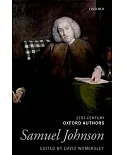內容簡介
As Joss Marsh observes in her stirring book on Dickens and cinema, Dickens was the first mass-mediated photographic celebrity of the modern era, more intimately "familiar" than any person in
Britain besides the royal family. Suggesting Dickens’s celebrity, as much as his work, contributed to the international phenomenon that is cinema’s Dickens obsession, Marsh begins with J. J. E.
Mayall’s famous celebrity portraits to trace Dickens’s impact on the pioneers, first masters, and later innovators of the cinema. At the same time, Marsh uncovers a larger issue: to understand
Dickens’s place in cinema is to understand his enmeshment in the whole complex of technologies and cultural formations that made up the world of late-Victorian fantasy-from the photograph to
the magic lantern, from celebrity to time travel. Each of the six chapters unfolds a century-long cultural story that maps the Dickensian points of inspiration in the history of cinema. Marsh’s
cinematic geography of Dickensland transports the reader from Dickens’s experiences with the early-Victorian portraitist’s camera to Sunset Boulevard, Billy Wilder’s remake of Great
Expectations as a satire on the vampiric celebrity "celluloid self"; from actor-manager Martin-Harvey’s 1899 manufacture of the "cast-iron" Victorian stage play to Dirk Bogarde’s 1958
inheritance of the sacrificial gay role of Sydney Carton; from Charley Dickens Jnr.’s attempt to cash in on his father’s knowledge of London to the history of production design as a medium of
historical tourism and virtual experience; from Dickens’s "impersonation" of Fagin, anti-Semitic and inherently theatrical, to the transformations of "the Jew" by Chaplin and David Lean and his
musical apotheosis as magician and Pied Piper; from Dickens’s 1868 return, in his last public reading, to the murder of Nancy to the contemporary slasher movie; and finally from the time travel
enabled by the magic lantern’s "dissolving views" through the role of Dickens’s lantern-inspired Christmas tales of the 1840s in the lantern’s development of pre-cinematic visual storytelling.
Informed by extensive archival research, deftly written, and beautifully illustrated, Joss Marsh’s book shows film’s fascination with Dickens was the trace of a persisting desire—fueled by
decades of Dickensian impersonation and enabled by the medium’s capacity to make still images live—to bring back the most extraordinary literary artist and personality of the nineteenth and
early twentieth centuries—to make Dickens live again.
網路書店
類別
折扣
價格
-
新書$6748





















